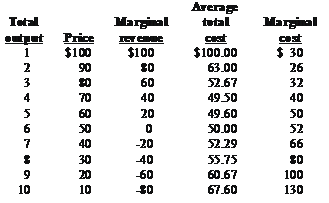Tell answer of this question.Refer to the following data for a nondiscriminating monopolist. At its profit-maximizing output, this firm will be operating in the: 1) perfectly elastic portion of its demand curve. 2) perfectly inelastic portion of its demand curve. 3) elastic portion of its demand curve. 4) inelastic portion of its demand curve.
